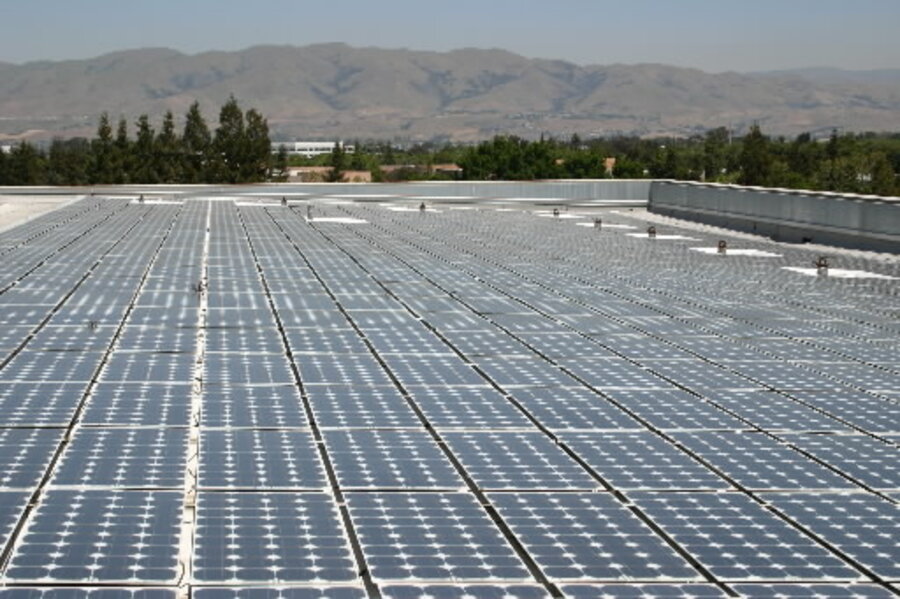Why isn’t everything powered by solar yet?
Loading...
Can’t we just put solar panels on every building and generate most of our energy for free?
After all, solar power is now the cheapest way to generate electricity and batteries are getting really good.
However, the US’s tangle of politics, economics, and technology layered on top of the extremely complex energy grid, makes it difficult for renewable energies like solar to gain a larger share of the energy mix we use.
Going solar as a country will take more than sitting back and letting price points alone win the day. It will take a long-term concerted effort from utilities, state-level regulators, technologists, business people, lawmakers, and consumers before it becomes a reality.
The solar switchover is a wicked problem but, “it’s a conversation that has to happen,” says Wes Herche, a research scientist at Arizona State University’s Global Security Institute. Predictions that free market forces will smoothe the way for a rapid transition underestimate the complexity of the energy market and just how greatly it is influenced by state-level regulations, adds Mr. Herche.
One of Herche’s colleagues at ASU, Clark Miller, is leading a conversation in the academic community around all the ways that energy system changes will bump up against social systems. This group of researchers he coordinates – the Energy and Society Initiative – come from multiple disciplines and from institutions around the planet.
A major point of friction that they study is government regulations.
“Electricity is sold as a regulated monopoly,” says Dr. Miller, who is also a senior sustainability scientist and associate professor at ASU. “If we had a market in electricity, I could buy a huge battery with a couple of my neighbors and we could all put solar on our houses. But that’s illegal in Arizona.”
Why is the market so regulated?
Our energy infrastructure, from power plants to transmission lines and fuel supply lines, developed over more than a century and at great cost. Regulators attempt to balance the needs of energy companies to properly plan for and make money on these long-term investments with the needs of consumers who rely on electricity as a basic necessity.
So in exchange for a monopolistic position, utilities have a responsibility to maintain the grid and power plants, ensure reliable power to industry and residences, and seek permission for rate hikes.
Enter solar into this system. As more residences and businesses install panels, many utility customers are suddenly drawing less power from the grid - and asking to get paid to pump their excess power out to the grid.
“We’ve built an entire society on a certain platform. Disruption on this level is a major deal,” says Herche.
In many places, the electricity meters cannot track reverse flow from homes to the grid.
Nor is the grid some sort of “plug-and-play system,” says Miller, where one coal-based power plant can be easily unplugged and an industrial-scale solar farm plugged in. Each power plant in the US produces different amounts of energy and balances different kinds of demands from consumers.
And as more customers install solar systems, the shape of customer demand is shifting in ways unforeseen when today’s existing power plants were financed.
Responses to disruption
Utilities and their regulators have responded in different ways.
Some states have laws preventing energy sharing, Miller says, which stops consumers selling or giving their excess energy to their neighbors. Some laws that states use in instances like this are nearly 100 years old, and not up to date with current technologies.
Some utilities have introduced options for consumers to pay extra to have their energy come from renewable sources like solar. Other utilities will buy excess energy back from customers that utilize solar power.
In California, Pacific Gas & Electric changed billing practices to ensure that all customers paid for grid maintenance even if they were generating more power than they used.
President Trump’s impact?
Meanwhile, at the federal level, the Trump Administration has expressed intentions to defund the Department of Energy and deregulate the energy space. But any federal-level adjustments may not actually have as big an impact as many think.
“There’s a lot of focus on the Department of Energy, but people should be focusing on what’s happening at the state level. They control the pocket books,” says Nathan Johnson, a senior research scientist and engineering professor at ASU.
Besides looking at states – long the laboratories of regulatory innovation – places with less pre-existing energy infrastructure provide opportunities for fresh thinking. Dr. Johnson works with students at ASU to develop easily deployable solar “microgrids” for use in disaster zones and in developing countries.
As solar becomes cheaper and batteries get better (after all, it’s not daytime all the time), the US will most likely see a regionally unequal transition of electricity generated from coal and fossil fuels to renewable energies like solar. How the transition plays out in each area will be based on consumer interest and individual states’ embrace of new technology in their laws and regulations.







